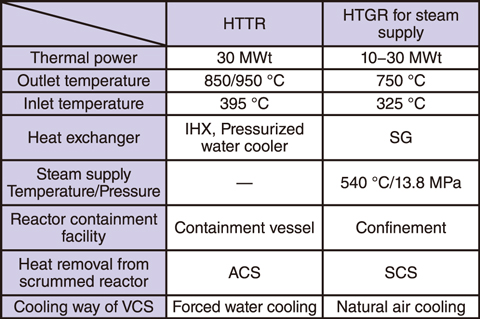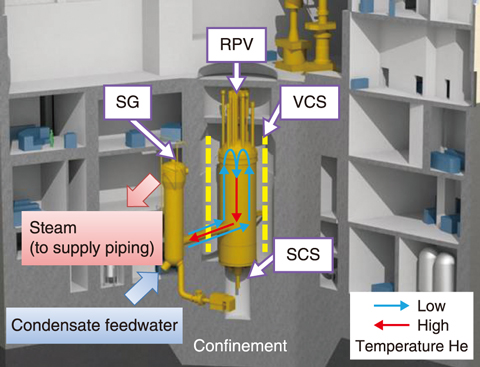Table 6-1 Comparison of design specifications of the experimental HTGR and HTTR for steam supply compared


Fig.6-5 A schematic view of the HTGR for steam supply
Coal and natural gas boilers are widely installed to supply steam to chemical plants. This work aims to reduce CO2 emissions by replacing these boilers with High Temperature Gas-cooled Reactors (HTGRs). The HTGR for steam supply design was considered based on High Temperature Engineering Test Reactor (HTTR) design in order to save design time and to take HTTR operation experience to design work. A 30 MWt of helium-cooled high-temperature gas-cooled test reactor using coated particle fuel and a graphite core block achieved continuous 950 ℃ for 50 days of operation in March 2010. The design specifications and a schematic view of the HTGR used for steam supply are shown in Table 6-1 and Fig.6-5, respectively. The HTGR effectively produced steam at 540 ℃ and 13.8 MPa to meet the demand from the chemical industry. Aiming to reduce the construction cost, the reactor core design was optimized and the component design was improved. Furthermore, plant safety was ensured with safety passivation of vessel cooling system (VCS).
![]() Optimization of reactor core design
Optimization of reactor core design
The number of control rods within the HTGR was reduced to 40% of HTTR since reactor shutdown merging of HTTR is too conservative. Optimization of the power distribution made the core more compact and increased the power density by 25% over that of the HTTR. In addition, the number of types of fuel enrichment was reduced for cost reduction of fuel manufacturing.
![]() Component design improvement
Component design improvement
A helical-coil counter-current type steam generator (SG) was installed in the HTGR, as in the intermediate heat exchanger (IHX) of the HTTR. A concrete “confinement” was designed and integrated to shorten plant construction time and reduce costs. The shutdown cooling system (SCS), instead of air cooling system (ACS), directly removes heat from the reactor core after reactor emergency stop was designed and it’s placed below reactor pressure vessel (RPV). It doesn’t have piping unlike ACS of HTTR.
![]() Safety passivation of VCS
Safety passivation of VCS
Unlike the conventional VCS design that uses forced water cooling, a passive air cooling VCS was designed that can still remove heat from outside of the reactor vessel without electricity.
Future work focuses to ensure continued plant safety and improve economic competitiveness of the implementation of the HTGR for steam supply.